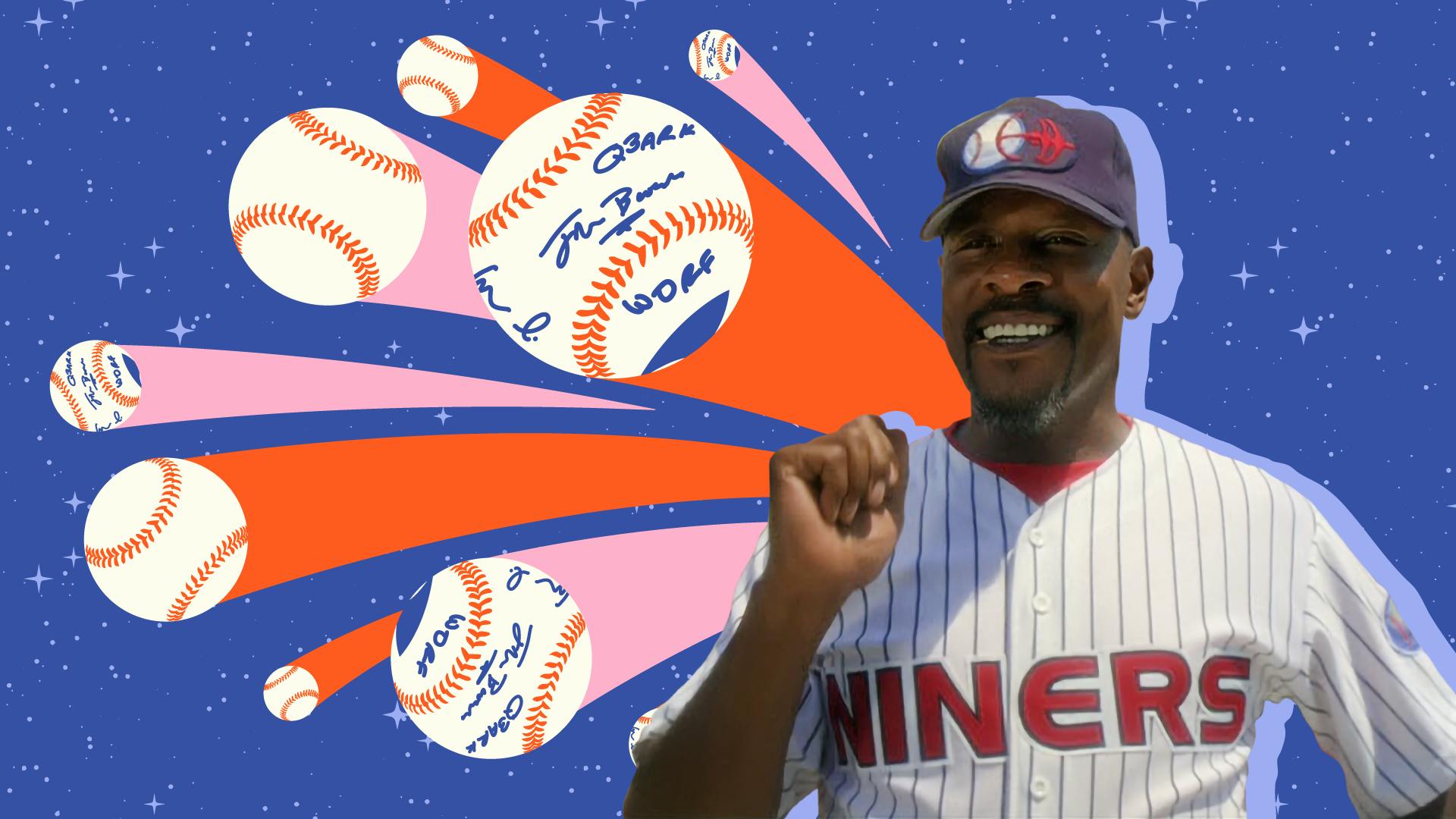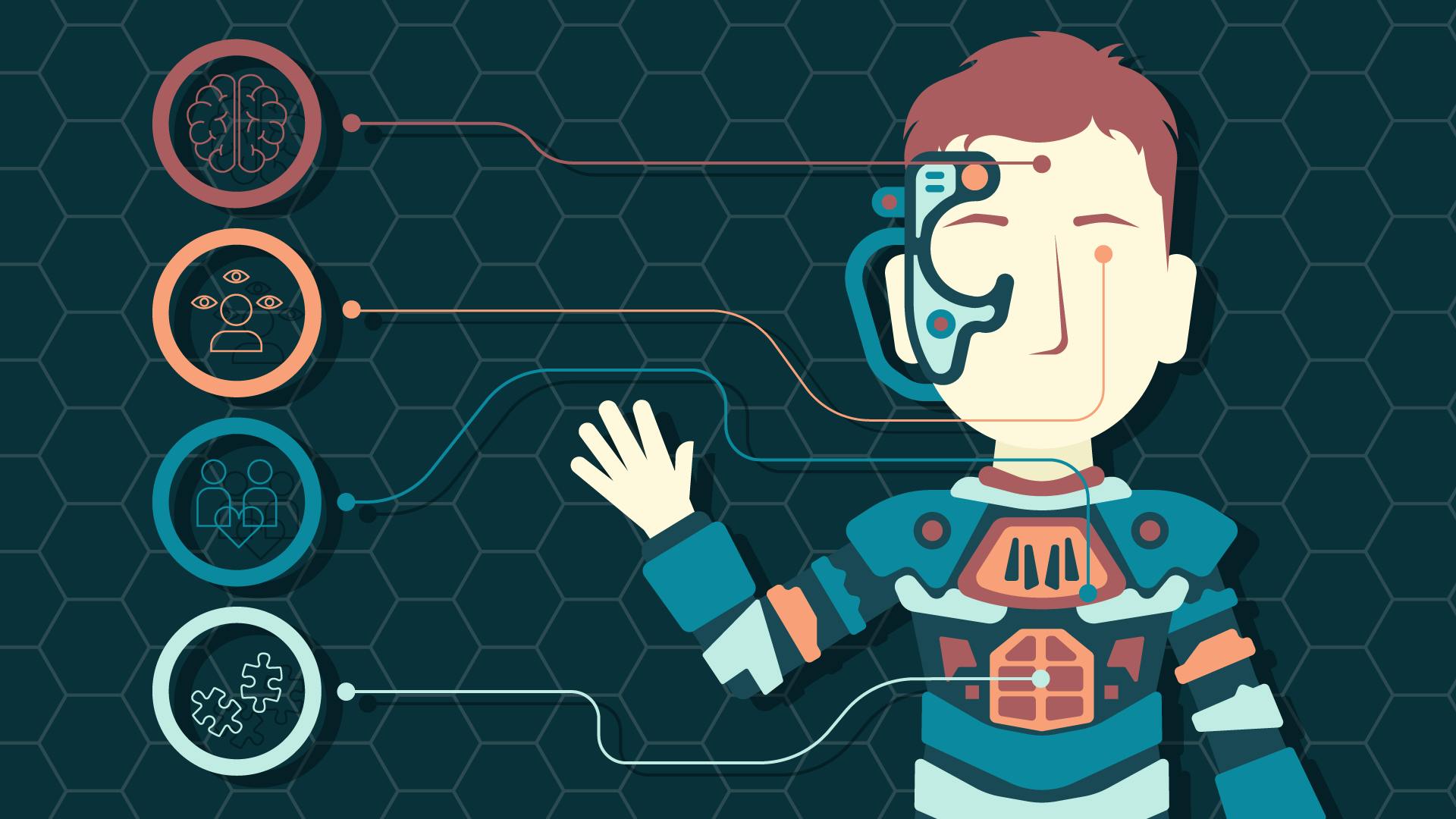Published Apr 5, 2024
A Guide to Star Trek: Discovery's First Contacts
In celebration of First Contact Day and the premiere of Discovery's fifth season, we're revisiting the series' first contacts.
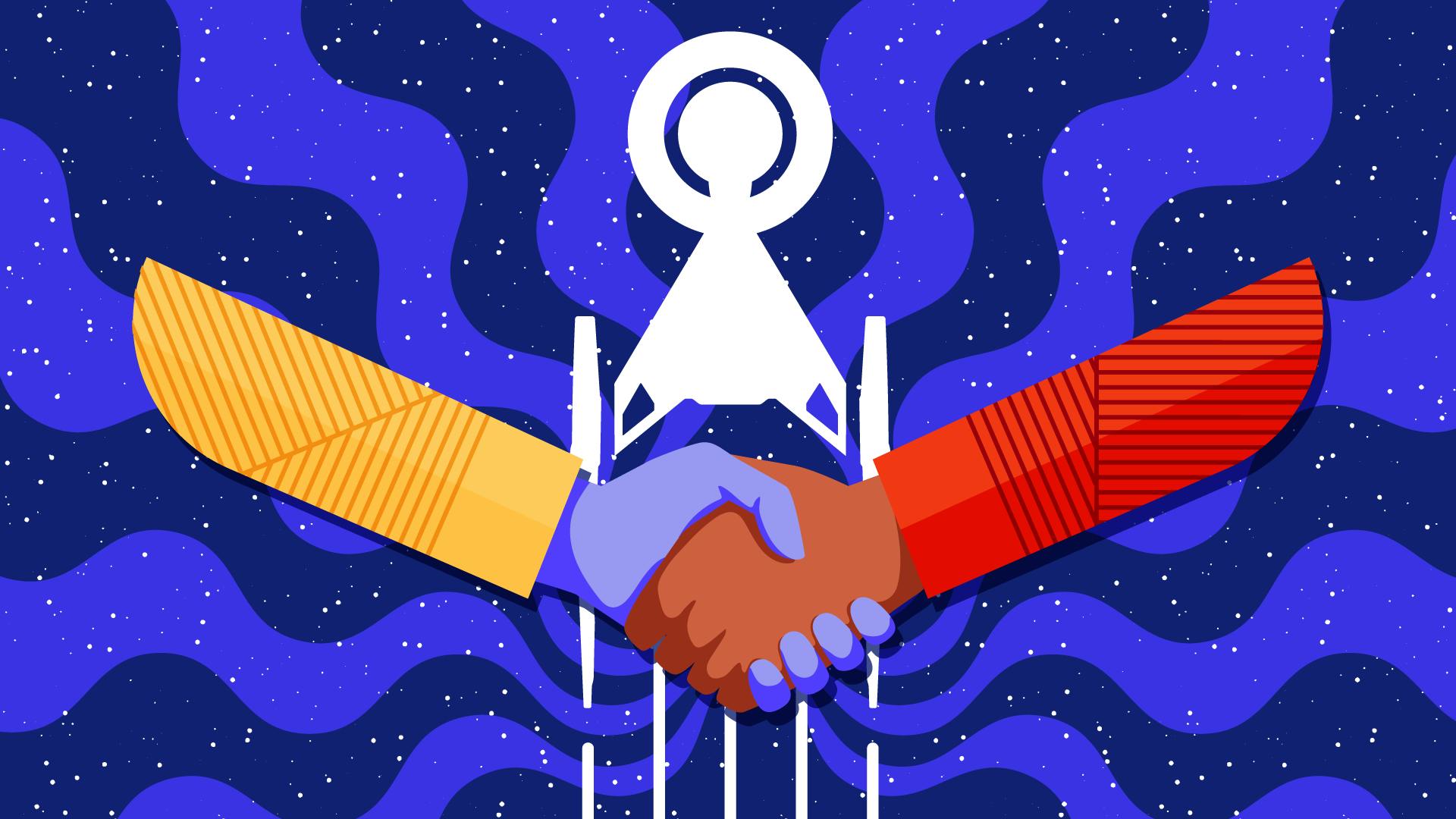
StarTrek.com
April 5 marks First Contact Day — the pivotal moment in Star Trek: First Contact when the first interaction between humans and Vulcans were initiated in 2063.
Meanwhile, the fifth and final season of Star Trek: Discovery finds Captain Burnham and the crew of the U.S.S. Discovery uncovering a mystery that will send them on an epic adventure across the galaxy to find an ancient power whose very existence has been deliberately hidden for centuries.
To celebrate both First Contact Day and the Season 5 premiere of Star Trek: Discovery, we've decided what better way to mark both occasions than by revisiting all the first contacts made across the series as we await what species and planets this epic adventure will bring them in contact with!
Vulcans-Klingons First Contact
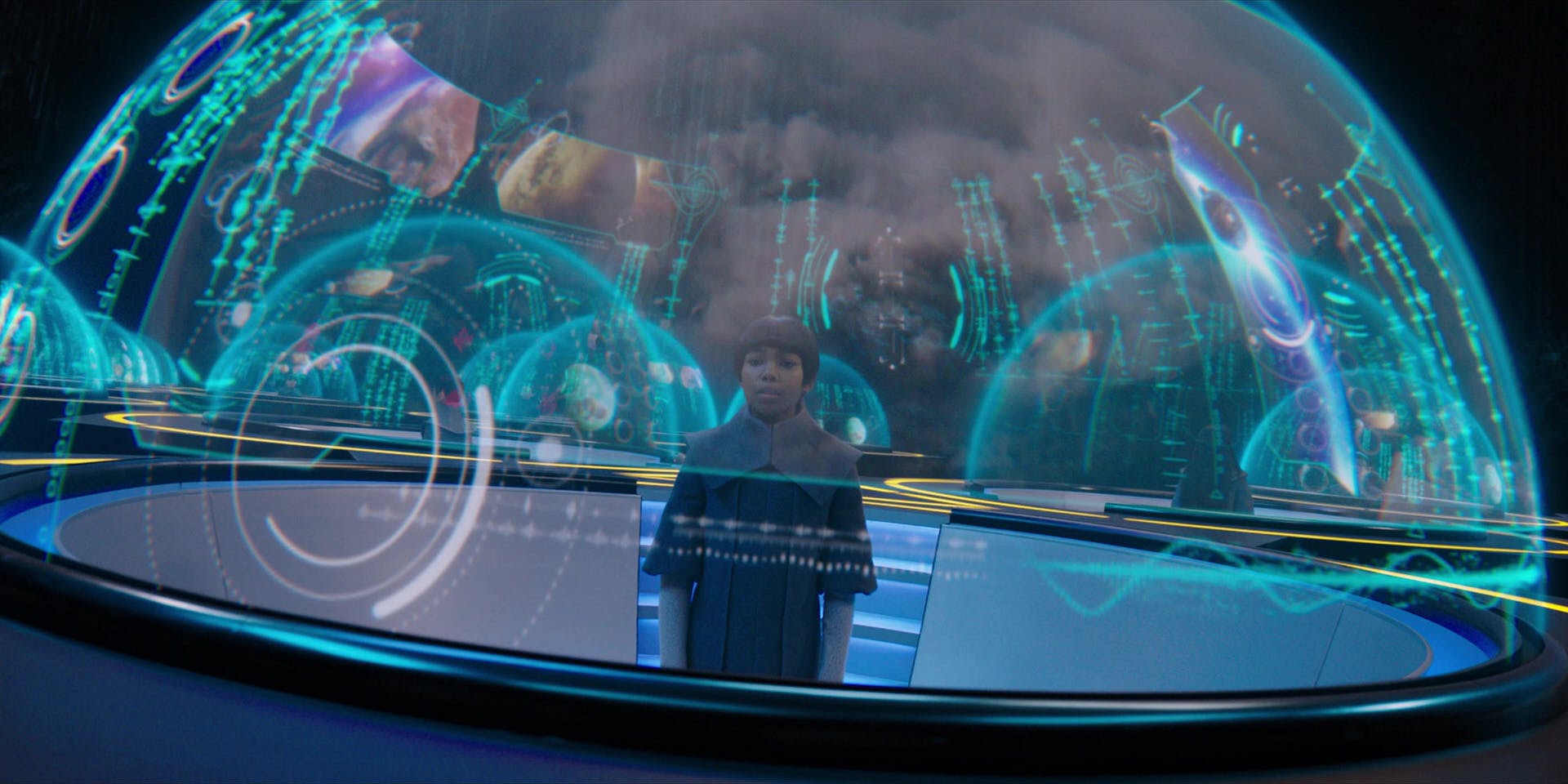
"The Vulcan Hello"
StarTrek.com
In Star Trek: Discovery's premiere episode, "The Vulcan Hello," First Officer Michael Burnham's insubordination towards Captain Phillipa Georgiou stemmed from the Vulcans' history with the Klingons.
After a run-in with the Klingon Rejac, an unconscious Burnham recalls a childhood memory at the Vulcan Learning Center where the Vulcan children are intaking lessons within a bubble pod. While being quizzed on Klingons, the young Burnham emotionally stumbles when presented with images of a recent Klingon terror raid at the Human-Vulcan science outpost at Doctari Alpha.
Later, on the Bridge of the Shenzhou, Burnham pushes back on the Admiral and Captain Georgiou to not stand down in the face of contact with the Klingons. When Burnham sends out a transmission to Sarek, he questions if she's letting her emotional considerations impede her logic. It was the Klingons who had killed her human parents as a child. She pleads to know how the Vulcans kept the Klingons at bay following the terror raid some time ago.
Back on the Bridge, Burnham makes one last appeal to Georgiou to fire upon the Klingons, recalling an incident 240 years ago, near H'Atoria, when a Vulcan ship crossed into Klingon space. "The Klingons attacked immediately and destroyed the vessel. Vulcans don't make the same mistake twice. From then on, until formal relations were established, whenever the Vulcans crossed paths with Klingons, the Vulcans fired first. They said hello in a language the Klingons understood. Violence brought respect. Respect brought peace. Captain, we have to give the Klingons a Vulcan hello." A plea that Georgiou shut down as Starfleet doesn't fire first.
Unfortunately for the Shenzhou, the Klingons, led by T'Kuvma, were intent in instigating a confrontation with the Federation in order to unify the 24 Great Houses, leading to the Battle at the Binary Stars.
Tardigrades
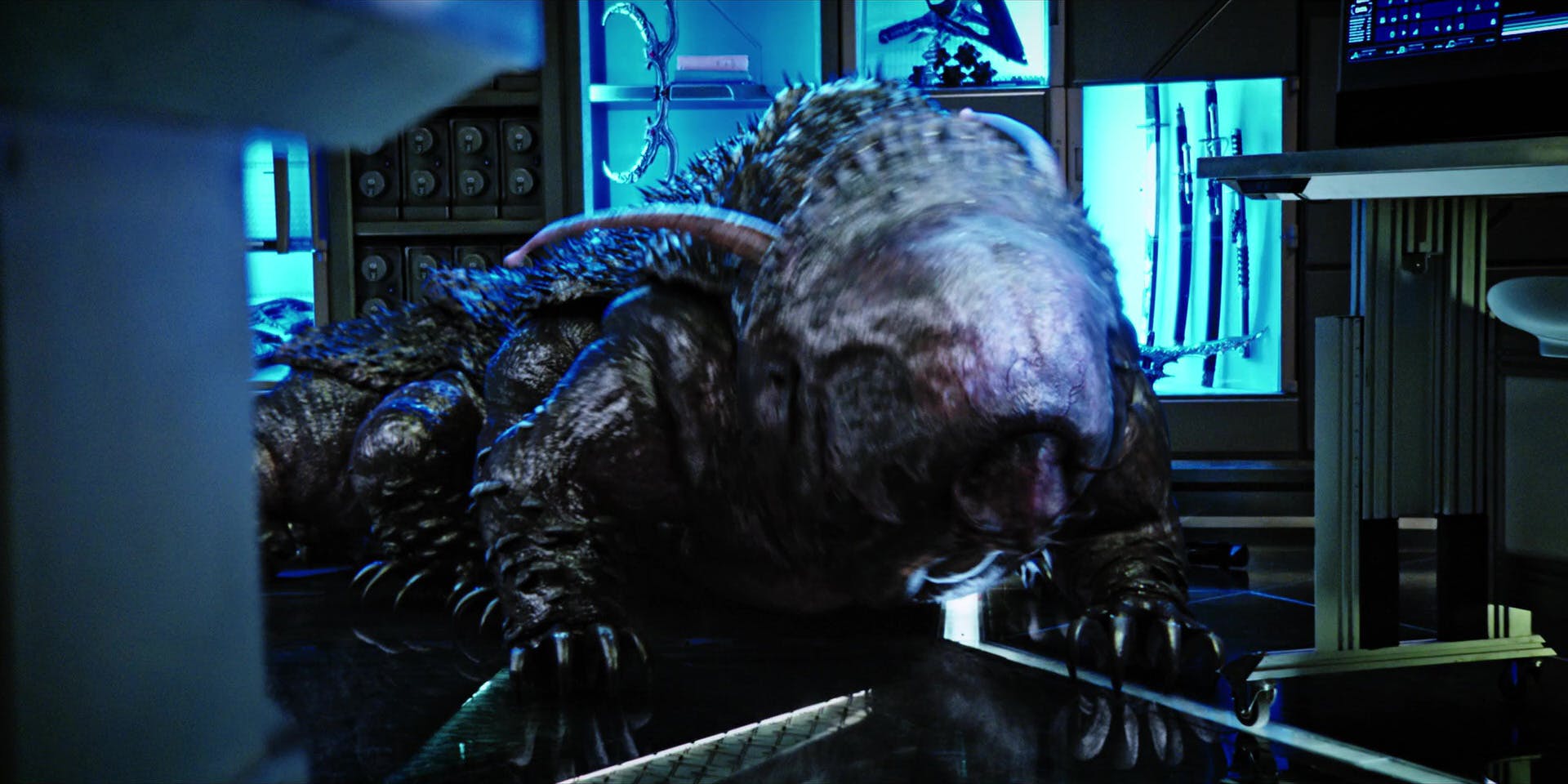
"The Butcher's Knife Cares Not..."
StarTrek.com
Following the outbreak of war with the Klingons, the U.S.S. Discovery and U.S.S. Glenn, led by the research of LT. Paul Stamets and Lt. Straal, respectively, were tasked with the development of the spore drive, a faster-than-light drive technology.
Investigating an anomaly that killed everyone aboard the Glenn, Stamets and Burnham discovered their sister ship had been using a tardigrade lifeform, which bared resemblance to Earth's micro-animal, due to its symbiotic relationship with the spores of the Prototaxites stellaviatori. Discovery brought the creature, nicknamed "Ripper" aboard their ship, to study not only its ability to chart and navigate the galaxy via the "intergalactic freeway system," but its ability to tear through metal and withstand phaser fire and Klingon weaponry. With Ripper's abilities, Stamets was able to achieve the first completely safe mycelial jump of any starship. However, these jumps caused Ripper a great deal of pain and suffering. With that discovery, Stamets injected himself with the tardigrade's DNA to take its place in navigating the mycelial network.
With the Federation's ban on genetic engineering, the spore drive was taken offline following the Klingon war, until they could utilize the spore drive without forcing its navigator to be genetically-altered or injected with tardigrade DNA.
Pahvans
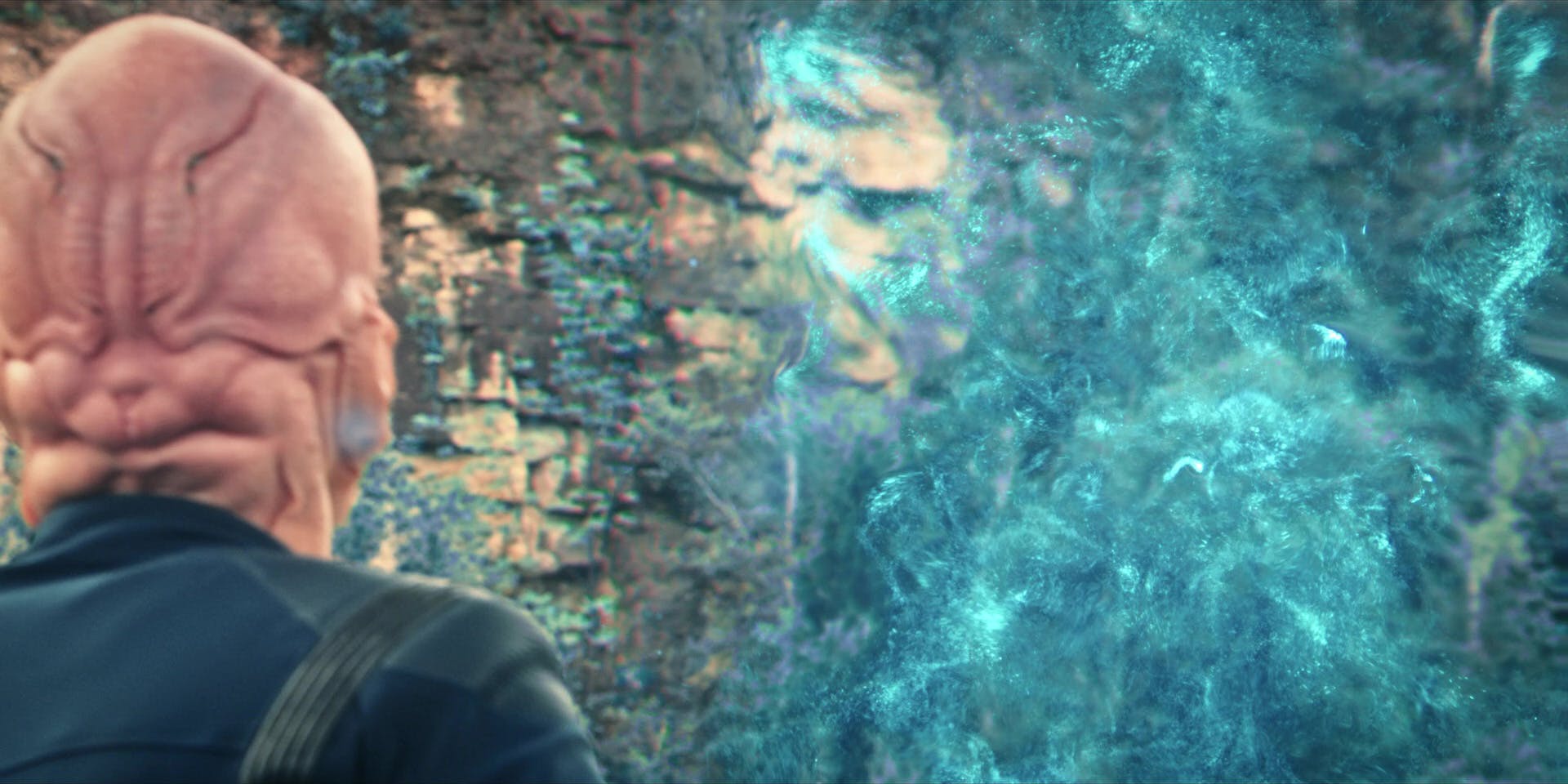
"Si Vis Pacem, Para Bellum"
StarTrek.com
In "Si Vis Pacem, Para Bellum," we come across the Pahvans, a species that seemingly lives in balance and harmony with their home planet, Pahvo.
Pahvo, also sentient, manifests itself as Pahvans in order to communicate telepathically with other species like Kelpiens, who can understand them. The Pahvans' entire existence is an effort to bring harmony to discord, and sharing themselves to others via their crystal transmitter. However, their interpretation of harmony and discord doesn't necessarily match other species with which they come in contact.
jahSepp
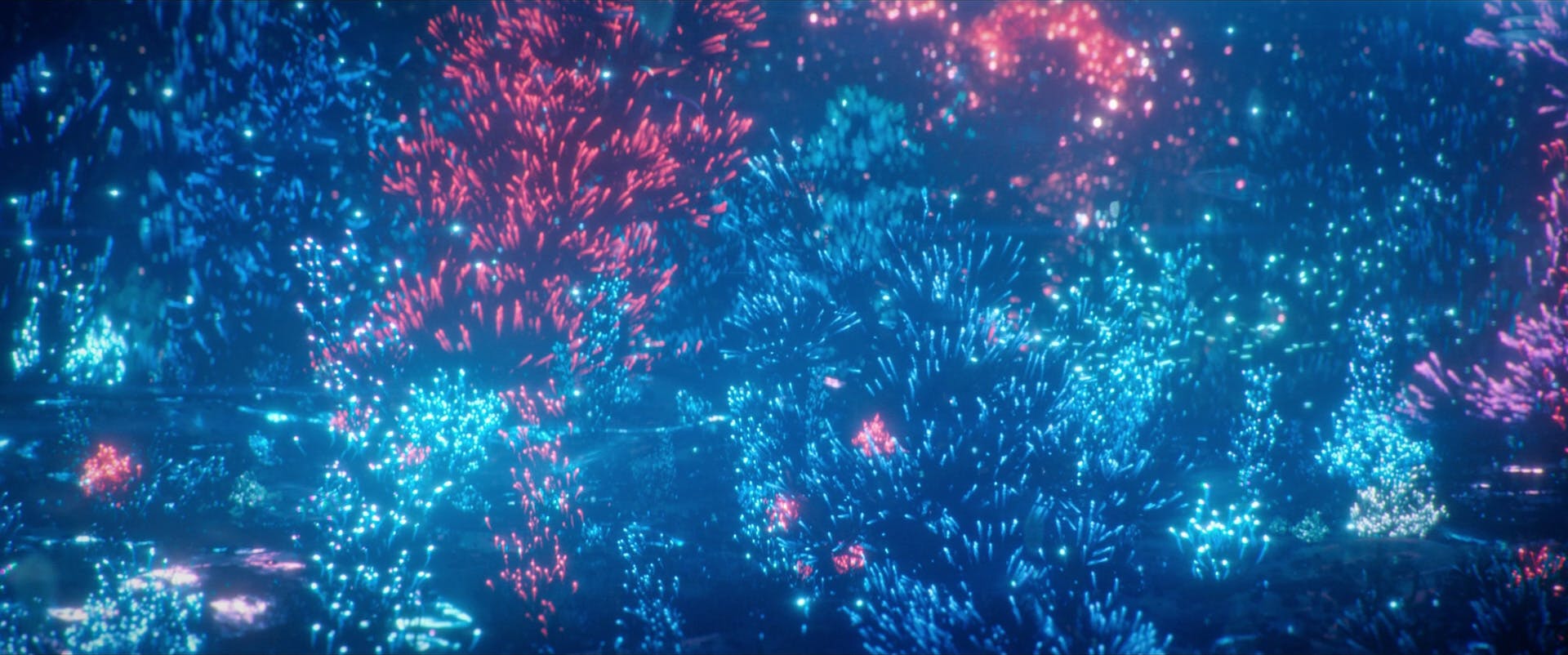
"Saints of Imperfection"
StarTrek.com
The Discovery would soon come in contact with the jahSepp, in Season 2, as the xeno-entity lives within the mycelial network.
In order to let Stamets and Discovery know about their destruction of their home every time they engaged the spore drive, the spore entity attempted to communicate with Sylvia Tilly by manifesting as someone from her memory — her childhood friend May Ahearn.
Kaminar, Kelpiens, and the Ba'ul
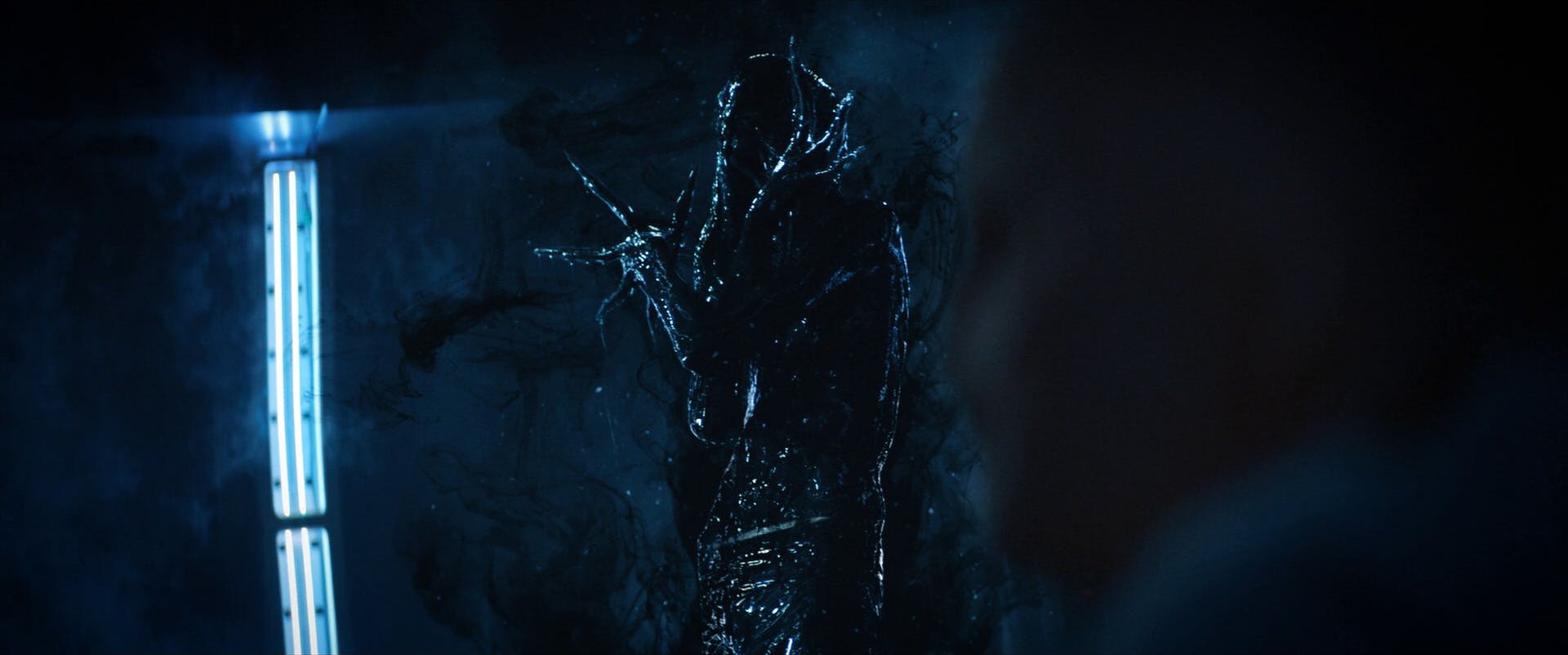
"The Sound of Thunder"
Kaminar, a planet with two moons, is home to both the Kelpiens and the Ba'ul, establishing a binary existence of predators and prey.
The Ba'ul are predatory species that hunted Kelpiens. As a warp capable species, they forced the pre-warp Kelpiens to submit to cullings, which the latter species view as "the Great Balance."
The U.S.S. Archimedes made first contact with the Ba'ul after receiving a transmission from Kaminar. However, their High Council proved hostile, leading the Federation to avoid them ever since due to General Order One (aka the Prime Directive). However, a then lieutenant serving aboard the Archimedes, Georgiou brought Saru aboard the starship as a refugee.
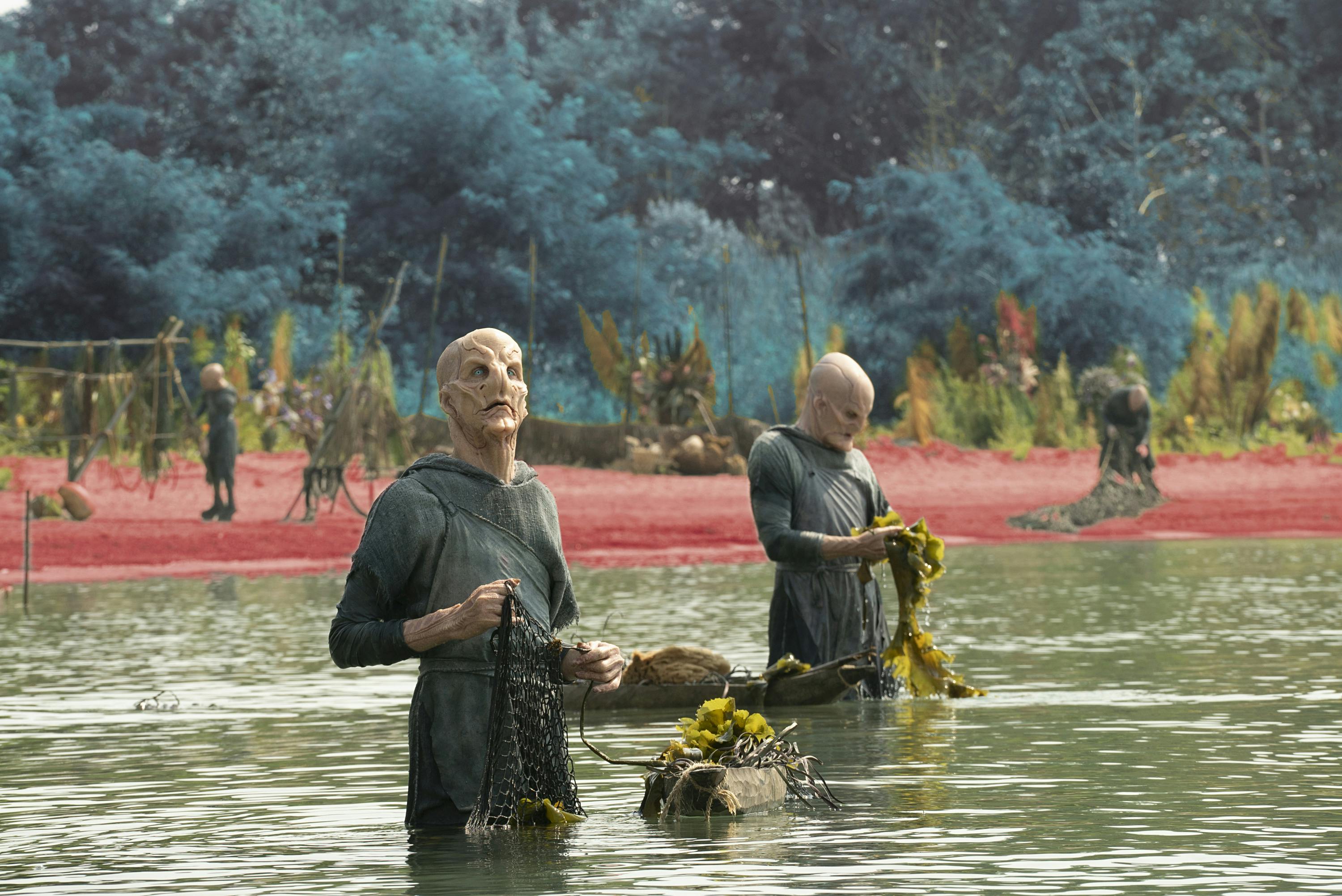
"The Brightest Star"
StarTrek.com
Kelpiens viewed the Great Balance as the process of going through vahar'ai and being culled by the Ba'ul. Their entire existence anticipation anticipated this death, and was their central organizing truth. Its this binary structure that led to Kelpiens to evolve their "threat ganglia," which is a biological warning system that signaled when there was a nearby threat.
When Kelpiens go through the maturation process of vahar'ai, their threat ganglia become painfully swollen. When Saru survived his vahar'ai (becoming less of afraid and developing quills), the first Kelpin to survive the evolution in over 2,000 years, the Discovery would learn the Great Balance was an invention by the actually frail Ba'ul to keep Kelpiens in line, as they once faced extinction at the hands of evolved Kelpiens.
The 32nd Century
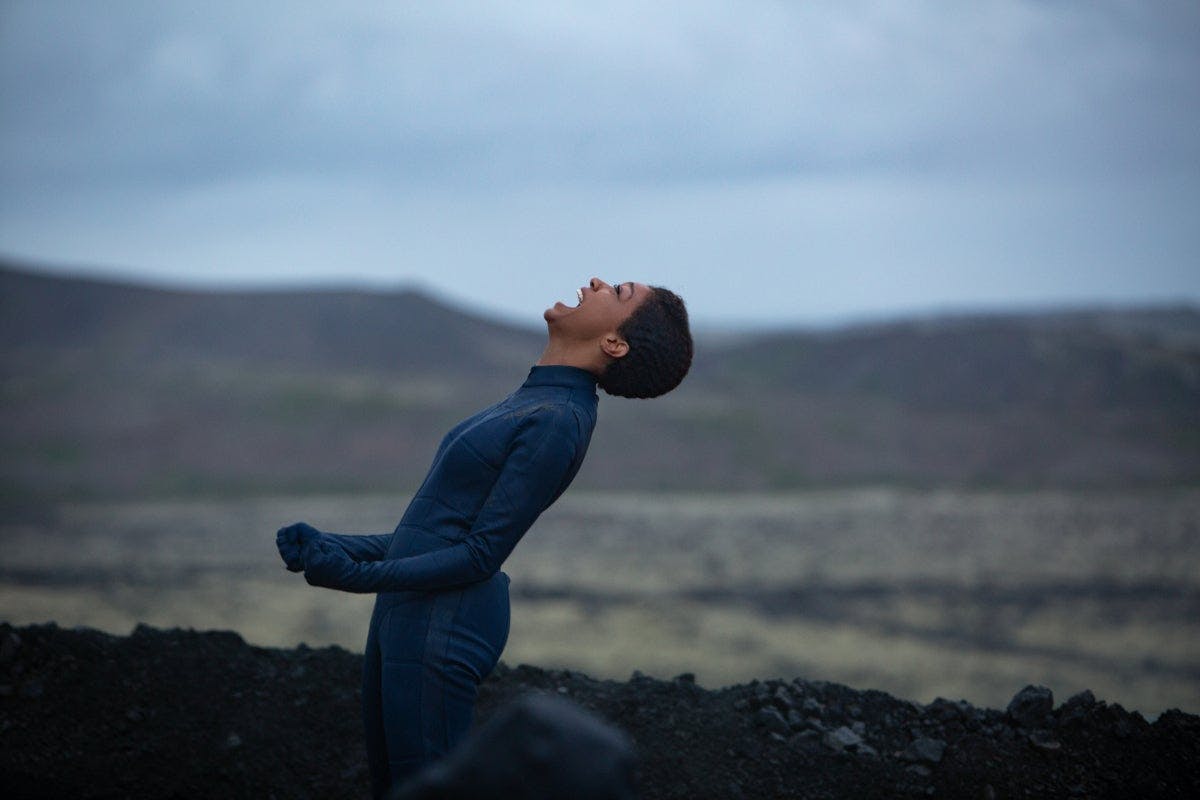
"That Hope Is You, Part 1"
StarTrek.com
Following the events of "Such Sweet Sorrow" and "Such Sweet Sorrow, Part 2," the third season of Star Trek: Discovery opens with Michael Burnham finding herself thrown into the 32nd Century, with the U.S.S. Discovery arriving some time after, where much of the galaxy is unlike the one she left behind.
The Federation is fractured, and the Burn had devastated warp travel. Here, Burnham learned that temporal wars — battles that took place over the course of all of space-time — led to all time-travel being banned, and any technology that enabled it destroyed.
Kwejians
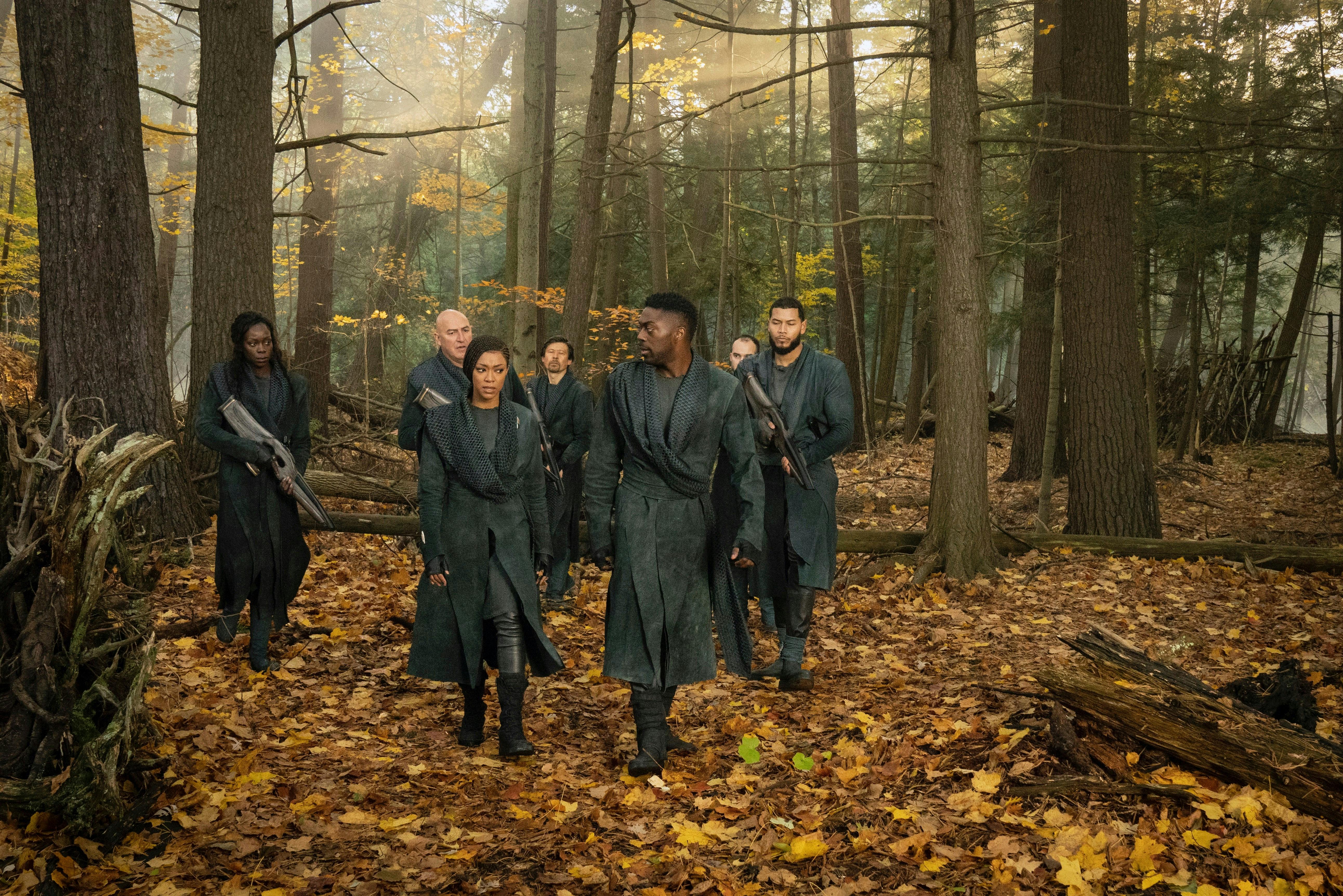
"The Sanctuary"
StarTrek.com
One of the first people Burnham meets in the 32nd Century is Cleveland "Book" Booker when she crash landed in Hima.
Book is a Kwejian, a humanoid race, that inhabited the homeworld by the same name until it was destroyed by the Dark Matter Anomaly (DMA), a massive phenomenon of extreme destructive force that destroyed everything in its unpredictable path. Some members of the Kwejian were empathic and could communicate telepathically with animals, like Book.
Federation-Species Ten-C First Contact
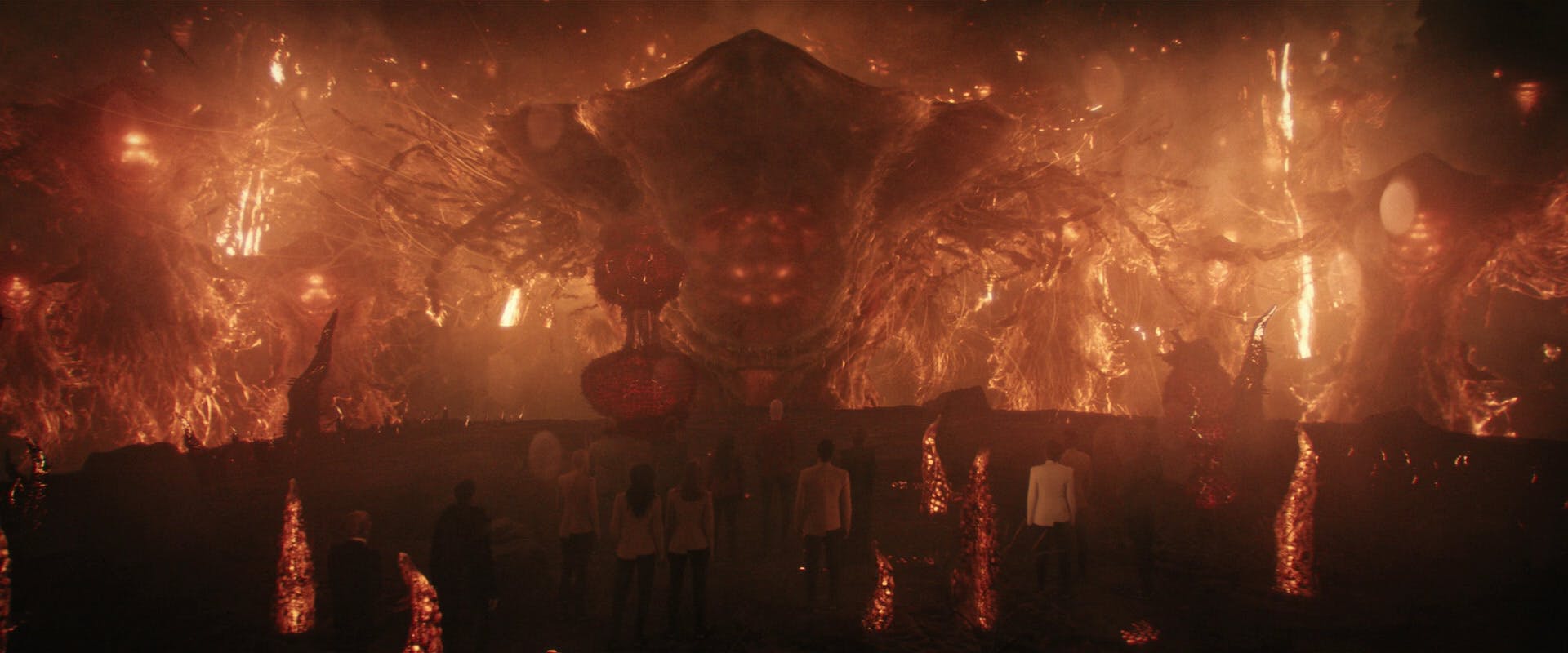
"Coming Home"
StarTrek.com
The U.S.S. Discovery was assigned a mission to find and initiate first contact with Species Ten-C in order to stop the rampaging Dark Matter Anomaly that threatened the galaxy.
When the Discovery visited the planet that used to be the Ten-C's home, they discovered giants, with translucent skin, who floated in the atmosphere. These giant creatures whose bond of unity lead to no concept of individualism.
Upon first contact with Discovery, the Ten-C agreed to turn off the DMA and repair the damage they had down to subspace.
